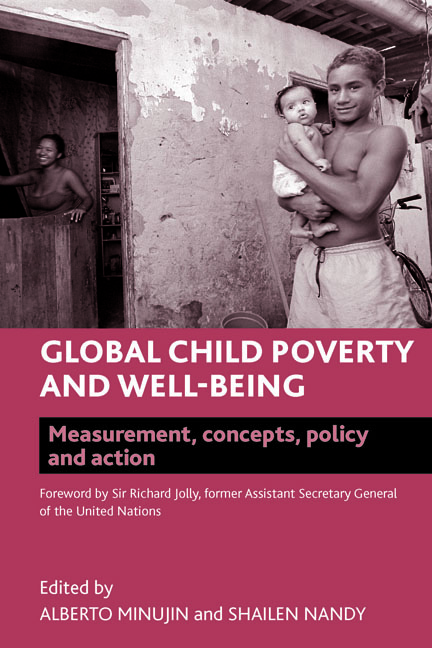one - Introduction
Published online by Cambridge University Press: 07 September 2022
Summary
In December 2006, the United Nations General Assembly (UNGA) adopted, for the first time, an international definition of child poverty. It recognised that:
… children living in poverty are deprived of nutrition, water and sanitation facilities, access to basic health-care services, shelter, education, participation and protection, and that while a severe lack of goods and services hurts every human being, it is most threatening and harmful to children, leaving them unable to enjoy their rights, to reach their full potential and to participate as full members of society. (UNGA, 2006, para 460)
The United Nations Children's Fund (UNICEF), the agency charged with promoting international child welfare and which had campaigned for agreement on a definition, noted:
Measuring child poverty can no longer be lumped together with general poverty assessments which often focus solely on income levels, but must take into consideration access to basic social services, especially nutrition, water, sanitation, shelter, education and information. (UNICEF, 2007)
These internationally accepted and agreed statements and definitions were a major step forward for everyone interested in the issues of child well-being and child poverty. The definitions provided a clear and unambiguous direction to governments, advocacy groups and others interested in dealing with child poverty as to which dimensions future research and indicators needed to reflect. The measurement and analysis of child poverty requires consideration of a wide range of non-monetary dimensions and factors, all of which are known to have a well-documented impact on children's survival, well-being and development. These dimensions include, as the definitions set out: children's living conditions, their access to basic services, their ability to participate in normal society as full citizens, the right to be free of any kind of discrimination and exclusion and their rights to protection from exploitation and abuse. In summary, this measurement and analysis addresses equal opportunities for all boys and girls in all countries and all situations. When viewed in conjunction with the sentiments expressed in the 1989 UN Convention on the Rights of the Child (UNCRC), where state parties were enjoined under Article 27 (among others) ‘to recognise the right of every child to a standard of living adequate for the child's physical, mental, moral and social development’ (UN, 1989), two things are apparent.
- Type
- Chapter
- Information
- Global Child Poverty and Well-BeingMeasurement, Concepts, Policy and Action, pp. 3 - 18Publisher: Bristol University PressPrint publication year: 2012



